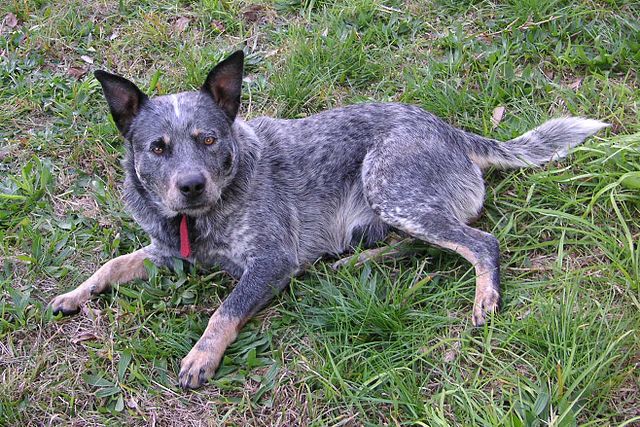The Australian Cattle Dog is a rough-and-tumble herding breed that requires an owner possessing good leadership qualities. These dogs need consistent obedience training and enough physical exercise to keep them happy. When raised correctly, they make awesome protectors and companions – their muscular build and natural suspicion means that an owner can feel safe walking a Cattle Dog alone at night. However, if not given firm leadership, the breed’s natural protective instincts can get out of control.
Some ACDs are prone to becoming overly protective of their people, a trait that is often brought about in combination of their high protective instinct and lack of training or boundaries. Others can become possessive of food, objects or their owners – a separate, but sometimes related, behavior problem. These issues are often seen where Cattle Dogs are living in homes that aren’t a good fit for them, and their needs are not being completely met.
Cattle Dogs have a lot of energy and definitely need plenty of outlets for it! Very playful, these dogs love any kind of sport where they can get down and dirty, particularly ones in which their owner joins in. They need athletic and active owners because they require more work than the average dog in terms of exercise – both mental and physical. A daily walk is definitely not enough. These dogs ideally need a lot of room to run, as well as many very physically exerting jobs throughout the day. Not every lifestyle can accommodate this high energy, intelligent breed. While a life of herding cattle would be the most ideal situation, many Cattle Dogs thrive playing Frisbee games, doing agility, going on long hikes and enjoying other canine sports (and lots of it). 
ACDs were bred not only to be tough enough to withstand the harsh environments of the Australian outback, but also to make decisions for themselves when needed while herding cattle. To do so, they had to be stubborn and independent. While they are a domesticated breed, they might seem more “untamed” when put into a housepet role, particularly if they aren’t given training and the aforementioned exercise/job combination. If they become bored, they will find ways to occupy their time that will probably be less-than-ideal! Obedience training should therefore be started early and kept up for life. These dogs love to work and are very trainable as long as they are given the proper motivation. Because they learn quickly they do well when given regular new challenges. Remember that although training should be fun and positive, it should also be firm.
The Australian Cattle Dog doesn’t always make the best match for young children. This breed tends to be inpatient and will not put up with any harsh treatment such as tail-pulling or slapping. While this behavior is never fair for any dog, some breeds will put up with it while others will not. A Cattle Dog is more likely to nip in retaliation. Because of their herding instincts, they may also be inclined to nip at or herd children. They do much better in homes with older kids or no kids at all. As far as other pets: some Cattle Dogs get along ok with cats while others will constantly be trying to chase them. When it comes to other dogs, many can be dominant or outright aggressive.
Cattle Dogs are healthy and long-lived (14-16 is average), but take a while to fully mature. An owner should plan on socializing them well throughout the first two years of their lives in order to promote a stable temperament. While many would be happy just to spend their whole life with their owner (usually following the owner around like a shadow everywhere), it is in their best interest to meet as many other people and animals as possible throughout their life. Plenty of positive interactions with strange people, places and things will help them from becoming timid or aggressive. On the flip-side, they should also be trained to spend time by themselves. The breed is prone to separation anxiety and while they shouldn’t be owned by work-all-day humans, they should be taught that it’s ok to spend a few hours by themselves.
